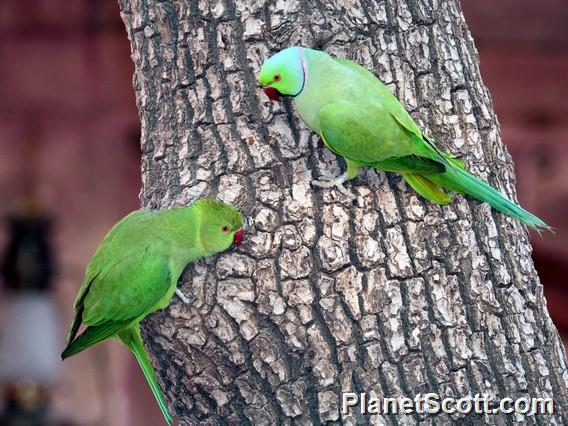Rose-ringed Parakeet (Psittacula krameri)

Rose-ringed Parakeet (Psittacula krameri)
×


Rose-ringed Parakeet (Psittacula krameri)
About Rose-ringed Parakeet (Psittacula krameri)
- Kingdom: Animals
- Phylum: Chordates
- Class: Birds
- Order: Parrots
- Family: New World Parrots
The rose-ringed parakeet, also known as the ring-necked parakeet, ringneck parrot or the Kramer parrot, is a medium-sized parrot in the genus Psittacula, of the family Psittaculidae. It has disjunct native ranges in Africa and the Indian subcontinent, and is now introduced into many other parts of the world where feral populations have established themselves or are bred for the exotic pet trade.
Source: Wikipedia
Trips
Visits
-
2005-03-28
Kauai - Kukuiolono Golf Course, United States of America -
2006-01-03
Bikaner - Gajner Palace, India -
2006-01-09
Kheoladeo National Park, India -
2006-01-12
Bandhavgarh National Pak, India -
2011-01-02
Cairo, Egypt -
2013-02-16
Namieri National Park, India -
-
-
-
2016-12-30
Deira, United Arab Emirates -
-
-
-
-



